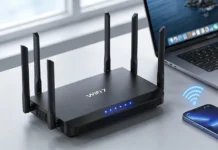Small Cell Forum (SCF) has published an important suite of documents focused on stimulating a competitive ecosystem for vendors of 5G-era small cell hardware, software and equipment. The expanded set of specifications contained in these documents can be found here.
Expanding upon the 5G Physical Layer API specification, published in July 2019, the new specifications enable small cells to be constructed piece-by-piece using components from different vendors, in order to address the diverse mixture of 5G use cases relatively easily, a common goal to all of the specifications made by Small Cell Forum.
The new release also includes two completely new specifications, SCF223: 5G NR FAPI P19 FrontEnd Interface Specification and SCF224: Network Monitor Mode API for Small Cells.
“The RF and Digital FrontEnd control APIs serve as companion documents to the 5G PHY API specification. These documents define the messaging protocols that allow the upper stack to tightly control and configure the RF, the Digital Front End (DFE) and the Analog Beamforming units – which is crucial in meeting 5GNR’s stringent timing requirements,” Samel Celebi, Principal Engineer at Qualcomm Technologies, Inc. “Thanks to this flexible API, the integration of units from different vendors, and their configurations for a diverse mixture of use cases, becomes relatively easy – a common goal to all Small Cells Forum specifications.”
“The Network Monitor Mode (NMM) API specification is the third document of the 5G FAPI suite, and adds 5G to the existing 4G, 3G and 2G radio environment monitoring capability,” said Vicky Messer, Director of Product Management at Picocom. “This capability, known as network monitoring or network listening, involves the small cell receiving RF signals and decoding system parameters from any nearby cells enabling SON (self organizing networks) to optimize the RAN deployment parameters accordingly. The NMM API makes this information available to SON software in a standard form, helping to fulfil the goal of an open 5G ecosystem.”
“The 5G-FAPI specification suite enhances and adds to the existing set of 3G and 4G specifications, which have played a significant part in growing the market for small cells by enabling a broad multi-vendor ecosystem. The development of the present suite is a proud achievement for the Small Cell Forum, highlighting the dedicated cooperative efforts of various member companies. These APIs also reflect our ongoing collaborations with other Industry Forums and this new release incorporates recommendations from OpenAirInterface Software Alliance.” said Dr. Prabhakar Chitrapu, SCF Chair and Lead MTS – AT&T Converged Access and Device Technology.
The suite of 5G FAPI documents was made possible by an extended collaboration of some of the small cell industry’s leading companies, including: Intel, Qualcomm Technologies, Picocom, ip.access and Cisco.
FAPI is an initiative within the small cell industry released by the Small Cell Forum to encourage competition and innovation among suppliers of platform hardware, platform software and application software by providing a common API around which suppliers of each component can compete. It imitates a long and distinguished engineering tradition of providing an ‘interchangeability of parts’ to ensure that the systems vendors can take advantage of the latest innovations in silicon and software with minimum barriers to entry, and the least amount of custom re-engineering. Hence the specification helps stimulate an innovative and competitive ecosystem for vendors of 5G small cell hardware, software and equipment.
The 5G FAPI is suitable internal interfaces and is agnostic to the type of small cell RAN architecture.
“5G-era networks will be very different from their predecessors, often disaggregated, with radio and baseband processes split in various ways between the cloud/data-centers and the cell site. They will also be very dense, with large numbers of small cells enhancing capacity to enable new classes of applications,” continues Dr. Chitrapu. “One of the most important parts the SCF’s remit is to create the right conditions for an open, multi-vendor ecosystem to flourish, driving competition and innovation. We anticipate that 5G FAPI will be universally adopted and implemented in all 5G-RAN products, irrespective of which disaggregation network architecture is deployed, and today’s announcement marks a key milestone in ensuring that 5G-era equipment can be developed in a vibrant multi-vendor ecosystem, lowering the barriers to entry both for suppliers and network deployers.”
About Small Cell Forum
Small Cell Forum develops the technical and commercial enablers to accelerate small cell adoption and drive wide-scale densification.
Broad roll-out of small cells will make high-grade mobile connectivity accessible and affordable for industries, enterprises and for rural and urban communities. That, in turn, will drive new business opportunities for a widening ecosystem of service providers.
Those service providers are central to our work program. Our operator members establish the requirements that drive the activities and outputs of our technical groups.
We have driven the standardization of key elements of small cell technology including Iuh, FAPI, nFAPI, SON, services APIs, TR-069 evolution and the enhancement of the X2 interface. These specifications enable an open, multi-vendor platform and lower barriers to densification for all stakeholders.
Today our members are driving solutions that include:
5G Components, Products, Networks
Dis-aggregated 5G Small Cells
Planning, Management and Automation
5G regulation & safety
Neutral Hosts & Multi-operator
Private and Public Network coexistence
Edge compute with Small Cell Blueprint
End to end orchestration
The Small Cell Forum Release Program has now established business cases and market drivers for all the main use cases, clarifying market needs and addressing barriers to deployment for residential, enterprise, rural & remote, and urban small cells. It has also established initiatives relating to both public and private (MNO) coordination.




















